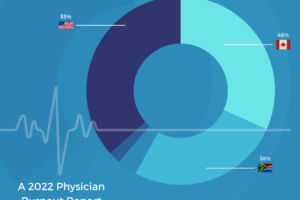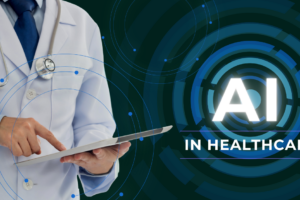Redefining Healthcare: How Specialized AI Scribing Transforms Medical Documentation Across Different Specialties

Redefining Healthcare: How Specialized AI Scribing Transforms Medical Documentation Across Different Specialties
The ever-evolving healthcare landscape is no stranger to a growing amount of administrative work. From updating patient charts to managing complex electronic health records (EHR), these time-consuming tasks often detract from what matters most—patient care.
Infusing specialized AI scribing for doctors, a cutting-edge solution designed to alleviate these burdens and streamline medical documentation is the way to go. You can start automating your medical documentation for free to improve your workflow now.
By combining voice recognition, Machine Learning (ML), and Natural Language Processing (NLP), AI scribing provides medical professionals with an efficient and reliable way to document patient encounters in real-time.
AI scribing is revolutionizing the medical field by meeting the specific documentation needs of various specialties, including Emergency Medicine, Family Practice, Cardiology, Surgery, and Mental Health; improving efficiency and enhancing the quality of patient care.
Let’s see an overview of the Technology!
What is AI Scribing?
AI scribing refers to the use of Artificial Intelligence (AI), to automatically transcribe medical notes during a patient encounter. This technology leverages voice recognition and Machine Learning (ML) algorithms to document conversations between healthcare providers and patients, transforming spoken words into structured clinical notes. Natural Language Processing (NLP) is then used to ensure accuracy, capturing the essential details necessary for high-quality medical records.
Unlike traditional human scribes, AI scribes operate in real-time and can process large volumes of data faster and with greater precision. One of the key differences between traditional scribing and AI-powered solutions is the level of scalability and consistency AI brings to the table. With AI scribes, physicians can avoid the risks associated with human error while optimizing documentation workflows.
Key benefits of AI scribing in healthcare include:
- Reduced documentation time: Doctors spend less time on paperwork and more on patient care.
- Increased accuracy: AI minimizes transcription errors by adhering to standardized medical terminology.
- Enhanced focus on patients: Physicians can fully engage with patients during consultations without the distraction of typing notes.
Studies show that AI scribing can reduce documentation errors by up to 30% and cut documentation time in half, leading to improved physician efficiency and better patient outcomes.
The Role of AI Scribing in Emergency Medicine
Emergency medicine presents unique challenges for medical documentation. Physicians in emergency departments (EDs) work in high-pressure environments, often treating multiple patients at once. In such settings, quick, accurate documentation is critical to patient safety. However, the fast-paced nature of emergency care makes manual documentation difficult.
AI scribes are designed to address these challenges by providing real-time documentation during patient encounters. By capturing vital patient information as it happens, AI scribes allow ED physicians to focus on urgent cases without having to worry about keeping detailed notes. This integration with EHR systems ensures that critical data, such as patient history, diagnostic tests, and treatment plans, are immediately accessible to the entire healthcare team.
How AI scribing benefits Emergency Medicine:
- Real-time data capture: AI scribes automatically record patient information during fast-paced encounters.
- Enhanced workflow efficiency: Physicians can make quicker, data-driven decisions in critical situations.
- Seamless integration with EHR systems: AI scribes update EHRs in real-time, reducing the need for manual entry.
Case studies have shown that AI scribing can reduce charting time in emergency departments by up to 50%, allowing clinicians to focus on patient care and improving overall department efficiency.
The family practice is another terrain where AI Scribes thrive in enhancing patient-doctor relationships, let’s read on!!
Family Practice
Family practice presents its own unique set of challenges, as physicians manage long-term patient relationships and diverse cases ranging from routine check-ups to chronic disease management. In this context, maintaining accurate and detailed medical records is essential for providing consistent, high-quality care. However, the time spent on documentation can limit the amount of time doctors can dedicate to meaningful patient interactions.
AI scribing offers a solution by handling complex documentation needs, freeing up physicians to engage more fully with their patients. This technology enables real-time note-taking, so doctors can maintain eye contact and build rapport without being tied to a computer screen.
How AI scribes enhance family practice:
- Improved patient interactions: Doctors can focus on patients rather than spending valuable time on documentation.
- Efficient management of complex cases: AI scribes can track ongoing care for chronic conditions, ensuring continuity.
- Reduced administrative burden: Family practitioners can spend more time on patient care and less on paperwork.
Survey data indicates that family practice doctors using AI scribes have reported increased satisfaction with their patient interactions and reduced time spent on administrative tasks, ultimately leading to better care and higher patient satisfaction.
Now let’s explore the precision and efficiency AI medical scribing offers Cardiology.
AI Scribing in Cardiology
Cardiology requires meticulous documentation, as patient histories and diagnostic reports often contain intricate details that must be recorded with absolute accuracy. From monitoring heart rhythms to interpreting echocardiograms and stress tests, cardiologists deal with high volumes of critical data. Ensuring that this information is accurately transcribed is crucial for making informed decisions about patient care.
AI medical scribing technology excels in cardiology due to its ability to handle complex medical terminology and real-time transcription. By assisting with the documentation of diagnostic procedures, AI scribes allow cardiologists to focus on analyzing test results and developing treatment plans without sacrificing accuracy.
How AI scribing benefits cardiology:
- Improved accuracy: AI scribes capture precise details in complex cardiology reports, reducing the risk of errors.
- Faster diagnosis: Real-time transcription speeds up the documentation process, allowing for quicker decision-making.
- Enhanced workflow: AI scribes reduce the administrative workload for cardiologists, enabling them to see more patients.
Data from healthcare facilities utilizing AI scribing in cardiology shows that this technology has led to faster diagnoses and improved accuracy in medical records, ultimately enhancing patient outcomes.
Specialized AI Scribing for Surgery and Post-Op Care
Surgical procedures demand comprehensive documentation before, during, and after the operation. Surgeons must meticulously record every aspect of the procedure, from patient consent to post-operative care instructions. This level of detail can be time-consuming and burdensome, especially when surgeons are also responsible for providing immediate post-op care to patients.
AI scribing offers a streamlined solution for surgical documentation by automating the process during surgeries and post-op recovery. Through seamless integration with surgical tools and monitoring systems, AI scribes ensure that all necessary details are captured accurately without interrupting the surgeon’s workflow.
Key benefits of AI scribing in surgery:
- Detailed documentation: AI scribes record critical data during surgical procedures, reducing the risk of missing important details.
- Post-op efficiency: Surgeons can focus on patient care while AI scribes handle post-operative notes and updates.
- Integration with surgical tools: AI scribes work in tandem with monitoring systems to track patient vitals and other essential metrics.
Surgeons using AI scribes report greater efficiency in documenting surgeries, enabling them to spend more time on post-op care and patient follow-ups.
How AI Scribing is Shaping Mental Health and Psychiatry
Mental health and psychiatry require sensitive, detailed documentation of patient encounters. Psychiatrists must capture long, often complex conversations while maintaining patient confidentiality and trust. Traditionally, this has meant extensive note-taking, which can detract from the therapeutic process.
AI scribing addresses these challenges by offering real-time transcription of patient sessions, allowing psychiatrists to focus on their patients without worrying about missing important details. Additionally, AI scribes ensure that all documentation is securely stored, safeguarding patient confidentiality.
How AI scribing benefits mental health care:
- Accurate session notes: AI scribes capture the full scope of patient conversations, reducing the need for manual note-taking.
- Maintaining patient confidentiality: AI technology ensures that sensitive information is securely transcribed and stored.
- Enhanced patient care: Psychiatrists can fully engage with patients, knowing that their documentation is being handled efficiently.
Mental health professionals using AI scribes report improved patient interactions and more detailed session notes, resulting in better patient outcomes.
So, in all, what does the future hold for AI scribing? Let’s find out together!
Future of AI Scribing: Innovations and Trends
As AI technology continues to evolve, the future of AI scribing looks promising. Innovations such as adaptive learning and specialty-specific models are on the horizon, allowing AI scribes to become even more accurate and tailored to individual medical fields. Additionally, AI scribing is expected to play a critical role in reducing physician burnout by automating administrative tasks.
Looking ahead, we can expect AI scribing to be widely adopted across healthcare sectors, with predictions indicating that this technology will become a standard tool in most medical practices.
Trends to watch:
- Adaptive learning: AI scribes will become more adept at understanding context and nuances within medical specialties.
- Reducing physician burnout: By automating tedious administrative tasks, AI scribes will allow physicians to focus more on patient care.
- Widespread adoption: As AI technology improves, more healthcare providers will integrate AI scribing into their practices.
A 2019 Industry report from the SpringerLink journal outlined ways that Artificial Intelligence would transform primary care. It’s been five (5) years since that report and the trail of AI since then has been blazing, giving credence to that report.
AI scribing bears the torch of the integration of AI in healthcare, as it captures patients’ encounters from inception, to providing necessary and required care.
Conclusion
Specialized AI scribing is revolutionizing the medical field by providing tailored solutions to meet the documentation needs of various specialties. From emergency medicine to mental health, AI scribes are transforming how physicians document patient encounters, allowing them to focus more on delivering quality care. As AI continues to advance, the future of medical documentation will become even more efficient, accurate, and patient-centered.
Healthcare professionals are encouraged to explore how specialized AI scribing can enhance their practice, reduce administrative burdens, and ultimately improve patient outcomes; and we have just the right one for you.
The future of healthcare is here—don’t get left behind.







